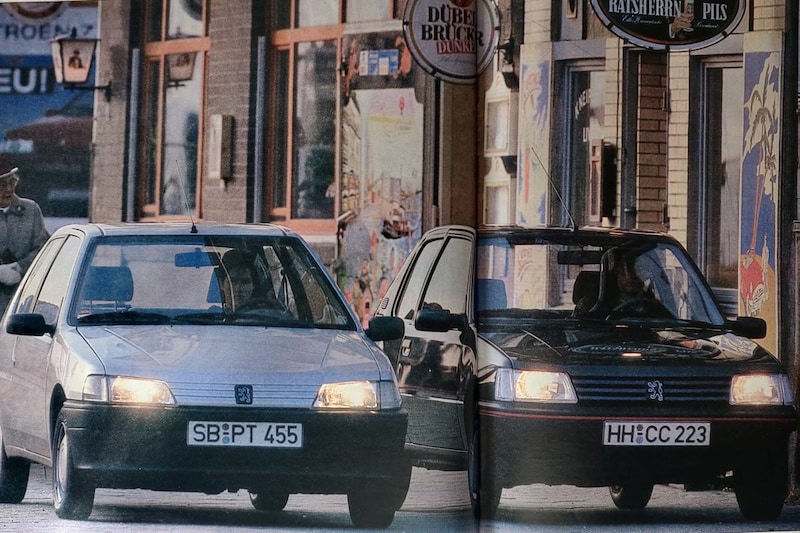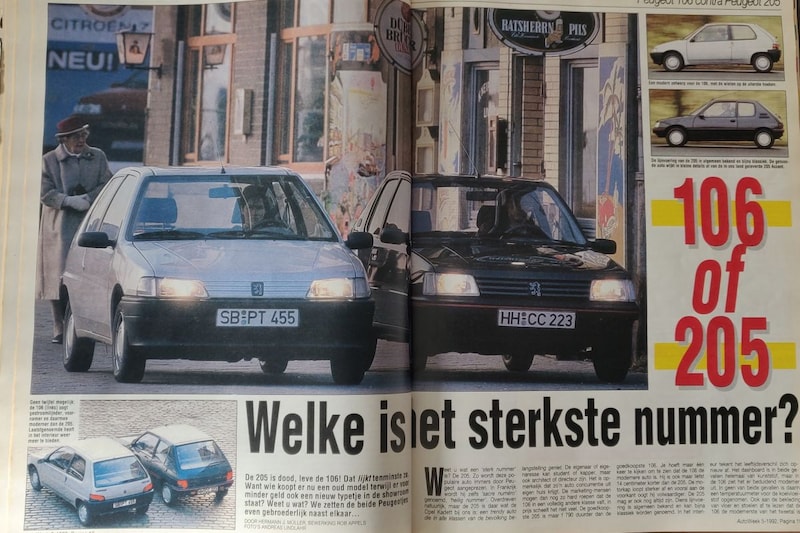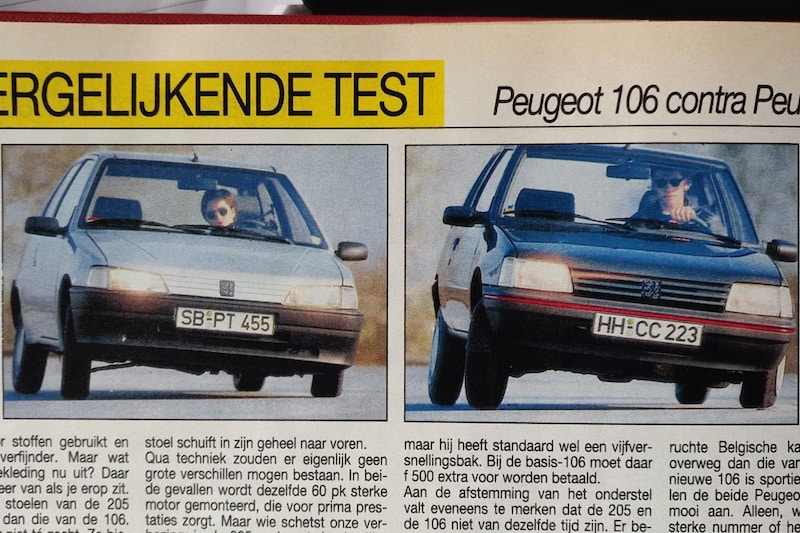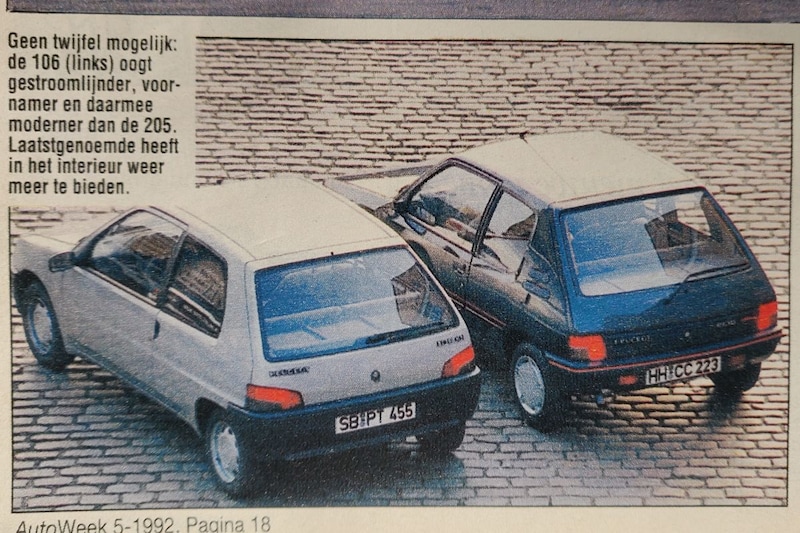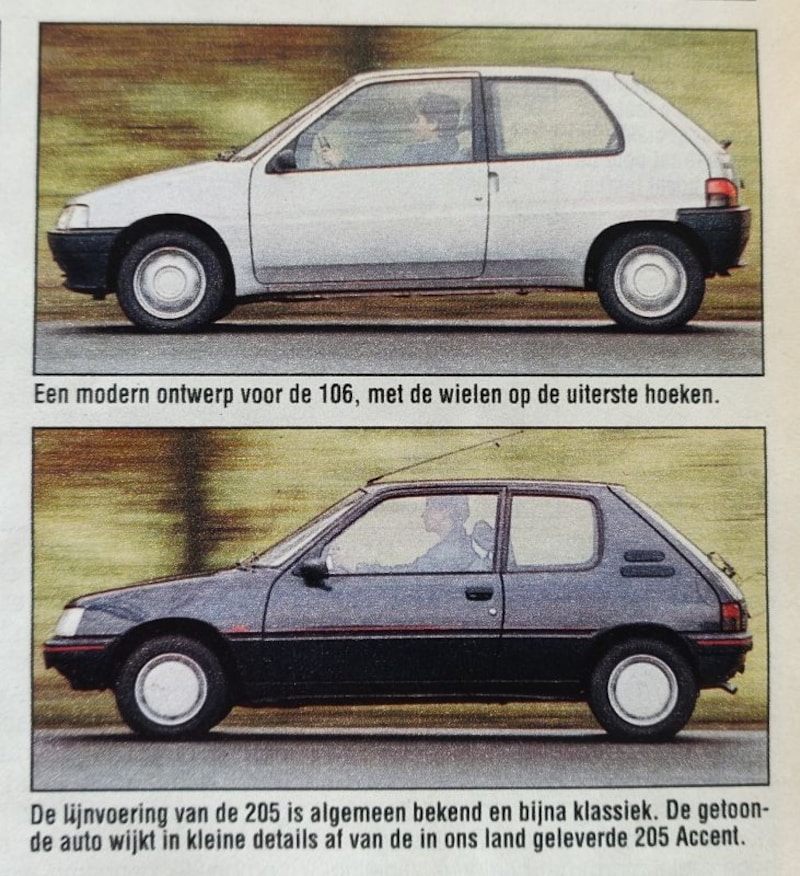At the beginning of 1992, the brand new Peugeot 106 had just arrived in the showroom and it seemed ready to bring the success of older brother Peugeot 205 to an end. However, a comparative test showed that the old 205 still had added value compared to the 106.
Peugeot presented a small newcomer with great potential in September 1991: the 106. The French seemed to have put a strong model on the market with it, so the 106 raised an important question: what about the now more than eight-year-old 205? According to Peugeot, the 106 was not intended as a direct successor to the 205, and yet on paper it was a car that could eat the 205 quite a bit. Exactly 30 years ago we were able to go out with both ‘Peugjes’ at the same time to discover whether it worked out that way in practice.
The first impression the 106 made next to the 205 was good. It was clear to the newcomer to see that there were quite a few years difference between them. Although the 205 was still not a bad thing to see in 1991, the 106 clearly looked a bit more modern. If we put the specifications of the 106 XN and 205 Accent side by side, it further spoke in favor of the former. The 106 was faster with the same engine at 100 km/h (12.3 s against 13.4 s), the sprint from 60 to 100 km/h was even faster in 4.6 seconds and also the average Consumption was with 6.9 l at 100 km, a bit lower than with the 205 (7.8 l/100 km). After all, they offered almost the same luggage space: 215 to 216 litres. All this for almost the same price: fl. 21,150 to fl. 21,940.

Once on board the 106, some hairline cracks started to show in that apparent lead. Although the design of the dashboard was clearly more modern than that of the 205, it was at the same time somewhat spartan. Here the 106 clearly showed that it was a car that operated at the bottom of the market. Even if it was a bit more dated, the dashboard of the 205 had just a little more ‘body’. That also applied to the seats, which were more comfortable in the 205 than in the 106.
The advantage shifted further towards the 205 once we hit the road with the two. Although the 106 was more sporty through bends than its old brother, the 205 made up for that with the higher driving comfort. In addition, it was quieter in the 205 than in the 106 and that further contributed to the experience that you had more car with the 205. It was clear that with the 106 you could have a very nice friend for the shorter trips. It was practical, looked modern and could invite you to drive a little more sporty if you felt like it. The 205 was a better option for those who often had to drive long distances. “The bottom line is simple: new brooms don’t always sweep cleaner, at least not in all areas. The 205 is very clearly the more mature, bigger and more comfortable car,” we said. So it hasn’t been played yet.
– Thanks for information from Autoweek.nl
